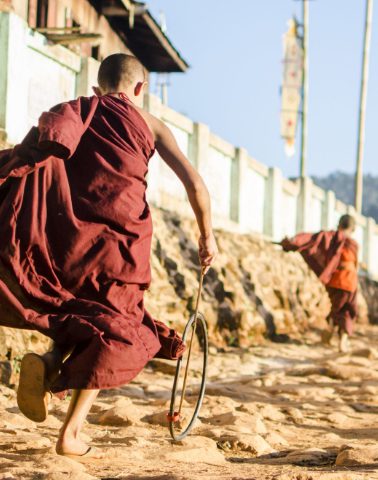
Subscribe to our mailing list
We are still here! Let us send you tips for travelling through Myanmar and stories from the road …
In 1971, violence broke out in what was then East Pakistan, between West Pakistani forces and the Bengali people of East Pakistan. More than just a regional dispute, the 1971 Liberation War prefigured many features of contemporary conflicts: the tension between sovereignty and human rights; national lineups that blur geographical divides; and the influence of international media and transnational public opinion. Occurring during a watershed moment in the Cold War, by turning the spotlight on these debates, the story of 1971 in the subcontinent is not merely a narrative of the past but a tract for today.
The political turbulence in Dhaka this year, emphasises how politics in Bangladesh today is still defined by what happened in 1971, during an inflection point of the Cold War. This tour goes beyond the headlines to explore what is happening in the country today. By speaking to on-the-ground experts and students at Dhaka University – pivotal in the recent overthrow of former Prime Minister Sheikh Hasina – our guests will leave Bangladesh with a rounded and holistic understanding of Bangladesh and its role in the world.
Sampan’s tour is led by acclaimed film director Fakhrul Arefeen. Arefeen’s film JK 1971 won Best Historical Film award at the Mumbai International Film Festival in 2022. Also accompanying us throughout the 14 days, is Indian writer and historian K.S. Nair, aka “Sree”. Sree specialises in the history of the Indian Air Force and is the author of December in Dacca – an account of the Indian Army’s intervention in Bangladesh at the end of 1971.
In addition to Arefeen and Sree, other specialists will join us to give private tours and presentations. We are also privileged to be joined by veterans of the Mukti Bahini – the guerrilla resistance movement of the Bangladesh Liberation War.
Over the 14 days we shall stay in historic and boutique properties (some of which feature in the story of 1971 itself), as well as one night in a rural Bengali village. Throughout the tour we shall celebrate the best of Bengali cuisine, meeting lively and dynamic characters along the way.


The 1971 Liberation War between West Pakistan and East Pakistan resulted in the creation of the independent nation of Bangladesh. Although the battle lasted less than one year, the history of Bangladesh 1971, has its roots much earlier.
Any Bangladesh Liberation War summary must begin with the partition of British India on religious grounds in 1947, which led to the formation of the Hindu-majority Dominion of India and the Muslim-majority Dominion of Pakistan. Partition slashed in two both the Punjab and Bengal, two of the largest provinces of undivided India. Pakistan therefore comprised two geographically and culturally distinct regions: West Pakistan and East Pakistan (East Bengal), separated by 1,600 kilometres of hostile Indian territory.
Having wanted Pakistan to comprise of the entirety of the Punjab and Bengal, the country’s first governor-general, Muhammad Ali Jinnah, described the territory he ultimately inherited as “a mutilated, moth-eaten Pakistan.” In his book Shame, author Salman Rushdie describes Pakistan at is birth as “that fantastic bird of a place, two Wings without a body, sundered by the land-mass of its greatest foe, joined by nothing but God.”
Over the years, the Bengali population of East Pakistan felt increasingly marginalized by West Pakistan. Despite having a smaller population, it was West Pakistan that held the political and economic power. The prominent Bengali politician Sheikh Mujibur Rahman was to say: “the basic truth that every Bengali has felt in his bones, [is] that we have been treated so long as a colony and a market.”
Upon visiting East Pakistan for the time in 1971, West Pakistani military officer Siddique Salik, wrote:
“The men were short and starved. Their ribs, under a thin layer of dark skin, could be counted even from a moving car. The children were worse. Their bones and bellies were protruding. […] I concluded that the poor of Bengal are poorer than the poorest of West Pakistan. I started finding a meaning in the allegations of the economic exploitation of East Pakistan. I felt guilty.”
In addition to their political grievances, the Bengalis were furious with the government in West Pakistan for not allowing Bangla (Bengali) to be one of the state’s official languages. Instead, the government insisted that Urdu – a language not-native to Bengal – be the only official language. This led to the Bengali language movement – a political movement that saw violence on the streets of Dhaka and the incarceration of many political prisoners, including Sheikh Mujibur Rahman.
The die was cast for the Bangladesh 1971 Liberation War, when Sheikh Mujib’s political party, the Awami League, decisively won the Pakistan general election called by military officer and president of Pakistan General Yahya Khan, in 1970. Despite the democratic mandate won by Sheikh Mujib, the central government continuously delayed the transfer of power to the East Pakistani party.
On 7 March 1971, in front of a sea of people at the Race Course in Dhaka (now Suhrawardy Udyan), Dhaka, Sheikh Mujib declared in a blazing voice: “The struggle this time is the struggle for our emancipation; the struggle this time is the struggle for independence. Joy Bangla!”
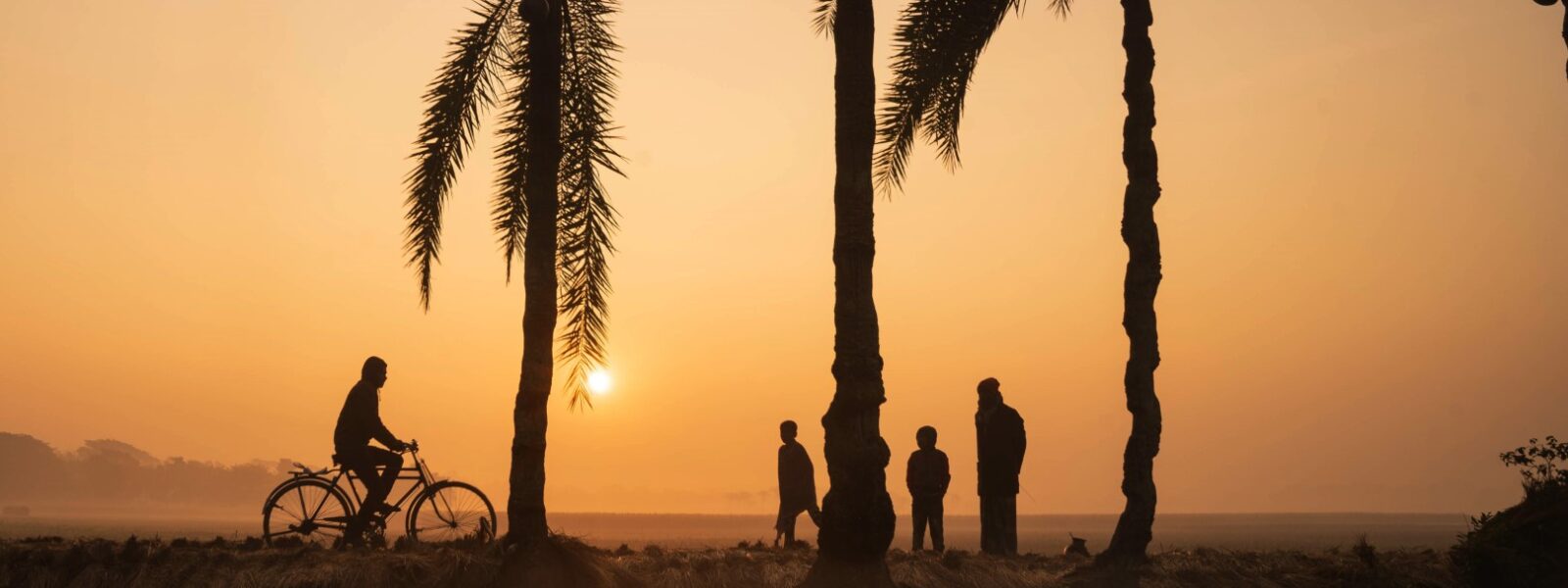
March 1971 can be seen as the beginning of the Liberation War. What happened in 1971 between Bangladesh and Pakistan is epitomized by the events of 25 March that year. On that night, the West Pakistani military launched Operation Searchlight. Officially, Operation Searchlight was an attempt to neuter the Bangladesh independence movement by arresting prominent leaders of the Awami League and disarm the East Bengal battalions of the Pakistan army in Dhaka (who were expected to side with the Awami League). In reality, it was a brutal crackdown incorporating widespread atrocities that targeted civilians, including the slaughter of students and razing of Hindu sections of Old Dhaka.
Archer K. Blood, U.S. Consul General in Dhaka, wrote in a telegram to Washington that the Hindu area of Old Dhaka “has been surrounded by the military and houses have been burnt and people butchered. Large number of casualties feared. Residents fleeing from this area were also not spared.”
Blood also reported that:
“Truckloads of prisoners were seen going into the East Pakistan Rifles camp at Peelkhana, from which one of our officers heard steady firing of approximately one shot per ten seconds for a thirty minute period. Our inference was that captured Bengali members of the East Pakistan Rifles were being executed.”
The events of this period are crucial to understanding what happened in 1971 in Bangladesh, characterized by mass killings, rapes and the systematic targeting of civilians. This marked the beginning of the Bangladesh 1971 Liberation War.
In the early hours of 26 March, shortly before being arrested and interred in West Pakistan, Sheikh Mujib sent a telegram to the East Pakistan Rifles, declaring:
“This may be my last message, from today Bangladesh is independent. I call upon the people of Bangladesh wherever you might be and with whatever you have, to resist the army of occupation to the last. Your fight must go on until the last soldier of the Pakistan occupation army is expelled from the soil of Bangladesh and final victory is achieved.”
Thus, was the formal start of the Liberation War. What ensued was a wide-spread conflict that left no-region in Bangladesh unscarred by war. Some members of the Awami League had managed to escape to India, from where they conducted a guerrilla war against the West Pakistani forces, supported by the Indian government. March 1971 also saw the formation of the Mukti Bahini (the 1971 Bangladesh military or “Liberation Army”). This group consisted of Bengali military defectors, civilians and volunteers.
The conflict also resulted in a humanitarian crisis, with millions of refugees fleeing to India. This situation provoked increased international attention and involvement. Prime Minister of India, Indira Gandhi, attempted to drum-up international support for Bangladesh and opposition to Pakistan. However, although there was much sympathy for the plight of Bangladesh among the people of the world, Indira Gandhi’s requests received a luke-warm response from governments, especially in the West.
The war escalated in December 1971 when Pakistan launched pre-emptive air strikes on Indian airbases, leading to full-scale war between India and Pakistan. The Indian military, in coordination with the Mukti Bahini, swiftly advanced into East Pakistan. This phase of the conflict is a crucial part of any summary of the Bangladesh Liberation War.
Within a few weeks, Pakistani forces were overwhelmed, and on 16 December 1971, Lieutenant General A.A.K. Niazi of Pakistan signed the Instrument of Surrender. This marked the end of the conflict and led to the inevitable formal formation of Bangladesh. The events of December 1971 are therefore a significant chapter in Bangladesh’s 1971 war history.
So ultimately, why did Bangladesh separate from Pakistan? The answer lies in the deep-seated political, economic and cultural grievances that the Bengali population held against the central government of Pakistan. The Liberation War was not just a military struggle but a fight for the right to self-determination and national identity.

Sampan’s Bengal Rising tour is the first of its kind. Over 14 days and accompanied by local and international experts throughout, our Bangladesh history tour explores both the causes and events of 1971. The tour also look at how the events of 1971 led to where the country is today. This is the best Bangladesh historical tour.
Although little known about outside of the sub-continent, the 1971 Liberation War had huge global ramifications. U.S. President Nixon and his National Security Advisor Henry Kissinger refused to condemn West Pakistan, nor empathise with the suffering Bengalis. Conversely, in 1971 the U.S.S.R. strengthened their military alliance with Indira Gandhi’s India, firmly in support of Bangladesh. As a flash point in the Cold War, from Washington to Moscow, the events in Bangladesh in 1971 is a little-known and rarely explored chapter of world history.
This tour will look at how the events of 1971 still define politics in Bangladesh today. Going beyond the headlines, this tour aims to help our guests develop a solid and well-rounded impression of not just the birth of Bangladesh, but where the country is today and where it might go tomorrow.
As well as exploring the birth of a beautiful country with a rich cultural heritage, this independence of Bangladesh tour celebrates the talented, industrious and charming people of Bangladesh. In addition to meeting seasoned experts in their field, we shall spend time with the youth of Bangladesh – who continue to play a pivotal role in shaping their country’s future.
We will dive deep into the back alleys of Old Dhaka, once an economic and cultural hub of Mughal India. Throughout the tour, we will also savour the delights of the Bengali cuisine and contemporary Bangladeshi culture.

During the Bangladesh Liberation War of 1971, the roles of the U.S.A. and U.S.S.R. were influenced by Cold War dynamics and their respective geopolitical interests. President Nixon and Kissinger maintained a close relationship with General Yahya Khan of Pakistan, then acting as their go-between as the White House attempted to ignite diplomatic relations with the People’s Republic of China. These geopolitical priorities trumped any concern for the plight of Bangladesh.
It was not that the White House was unaware of the horrors being committed by Pakistan. In 1971, Archer K. Blood at the U.S. Consul in Bangladesh, sent continuous telegrams reporting on the situation to his superiors. These telegrams included Blood’s inspection of the two mass graves on Dhaka University campus in March 1971 and the account of a Pakistani officer admitting to the killing of Hindu boys, with the justification that East Pakistan had to be “cleansed”.
This ultimately led to Blood sending an open telegram of dissent to the U.S. State Department. In the telegram Blood accused Washington of “moral bankruptcy, ironically at a time when the USSR sent President Yahya a message defending democracy, condemning arrest of leader of democratically elected majority party and calling for end to repressive measures and bloodshed.”
In contrast to the U.S., the U.S.S.R. condemned Pakistan’s military actions in Bangladesh and aligned itself diplomatically with India during the conflict. This support included diplomatic backing at the United Nations and logistical assistance to India during the war.
Years later, Blood was invited back to Bangladesh by Prime Minister Sheikh Hasina. Blood recounts how the Prime Minister “spoke with her gratitude of the countries which had been helpful to the Bangladeshi struggle for independence.” She cited India and Russia, but used the phrase “the people of the US”.
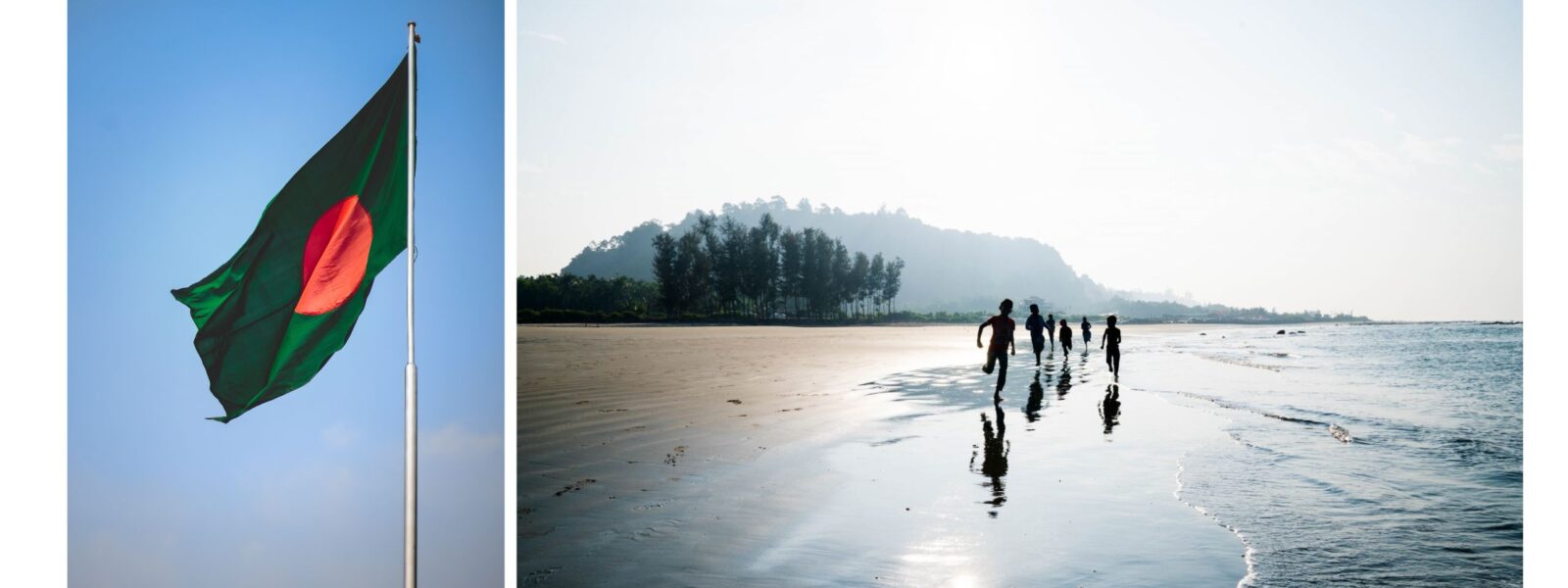
India’s intervention in the Bangladesh Liberation War of 1971 was driven by geopolitical and humanitarian factors. India perceived an opportunity to weaken Pakistan, its long-standing rival, by supporting Bangladesh’s independence movement. However importantly, India felt compelled to enter the conflict due to the atrocities committed by the Pakistani forces leading to the Bangladesh refugee crisis of 1971.
In 1971, Bangladesh refugees were pouring into India. In his book 1971, historian Srinath Raghavan writes that by May 1971 a staggering 102,000 registered refugees were entering India every day. That is approximately seventy-one refugees every minute.
As the war continued, Prime Minister of India Indira Gandhi, toured the capitals of the West attempting to garner support for Bangladesh. The response was faintly accusatory.
On BBC television, she was asked if she was not contributing to the exodus of refugees by arming the Bengali guerillas. The Prime Minister responded:
“Does that mean we allow the massacre to continue? The massacre began long before there was a single guerrilla. What does quietening mean? Does it mean that we allow, we support genocide? May I ask you: when Hitler was on the rampage why didn’t you say “let’s keep quiet”, and “let’s have peace in Germany”, and “let the Jews die”?”
With or without support from the West, direct military involvement by India appeared inevitable. On 3 December, the Third Indo-Pakistani War (the Indo-Pakistani War of 1971) began with Pakistan’s preemptive aerial strikes on eight Indian air stations.
The success of the Indian Army, aided by the local Mukti Bahini, was swifter than they had expected, and led to what happened in Bangladesh on 13 December 1971, when in Dhaka the Pakistanis surrendered unconditionally. Indian involvement therefore, ultimately lead to the official formation of Bangladesh in 1971.
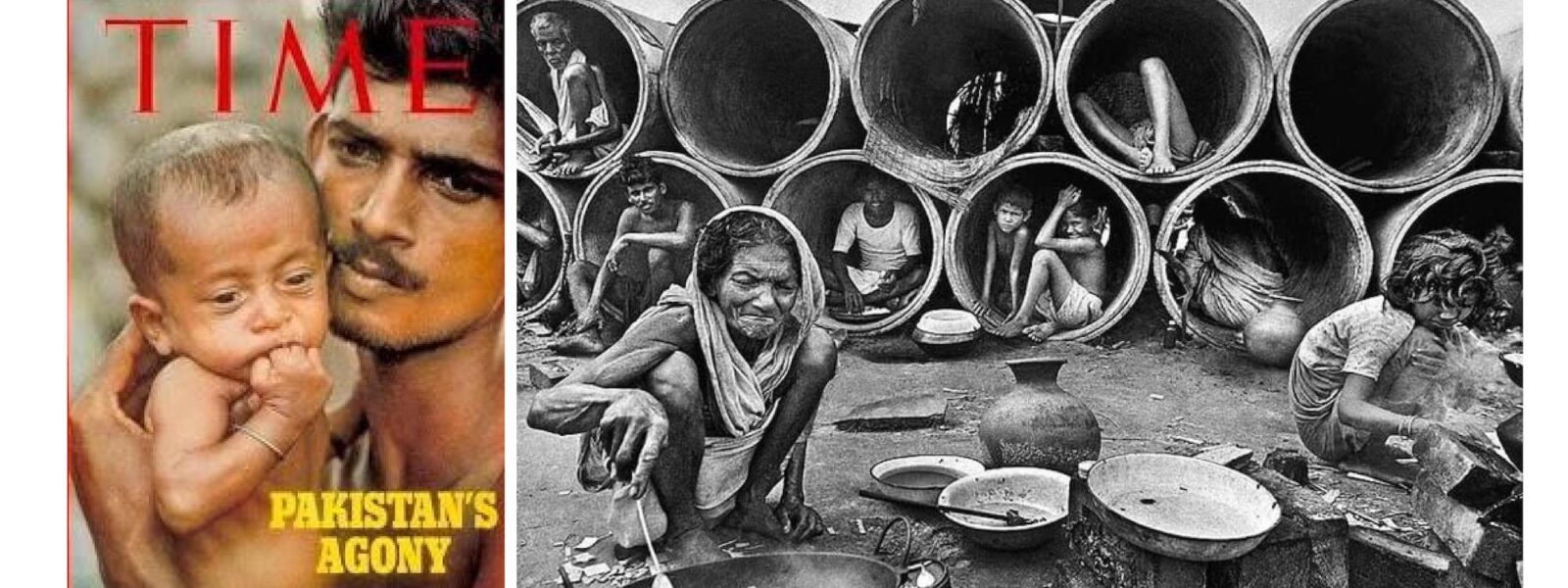
How many Bangladeshis died in the 1971 war is uncertain. What is not uncertain, is Pakistan’s brutal campaign of systematic violence incorporating the mass killings of civilians, murder of children and mass rape of women. The 1971 Bangladesh atrocities began with Operation Searchlight in March 1971, with the execution of university students.
It is worth noting the Pakistanis denied the charges levelled at them. Siddique Salik, in 1971 an officer in the Pakistani Army, visited the university campus after the night of the massacre. In Witness to Surrender, he writes, “The widespread killings zestfully reported by a hostile world press, did not take place.”
In 1971, Pakistan arranged a state-sponsored trip of journalists to East Pakistan, so to generate global support. This venture backfired when one of those journalists, Anthony Mascarenhas, broke the story of the true extent of the Bangladesh 1971 war crimes.
On 13 June 1971, the centrefold of The Sunday Times of London carried the headline “Genocide”. Mascarenhas quoted military officers stating that they were “determined to cleanse East Pakistan […] even if it means [the] killing of two million people and ruling the province as a colony for thirty years.”
By authoritatively levying the charge of genocide, Mascarenhas transfixed global attention with a single shaft of investigative journalism. George Harrison arranged the “Concert for Bangladesh” in Maddison Square Gardens in New York and poet Alan Ginsberg travelled to Kolkata. On returning home, Ginsberg wrote the poem September on Jessore Road. Ginsberg wrote of the procession of refugees walking towards Kolkata, the squalor of the camps and the children with distended bellies queuing up for food.
Estimates of the Bangladesh 1971 war death toll vary widely, but it is believed that between 300,000 to 3 million lost their lives.
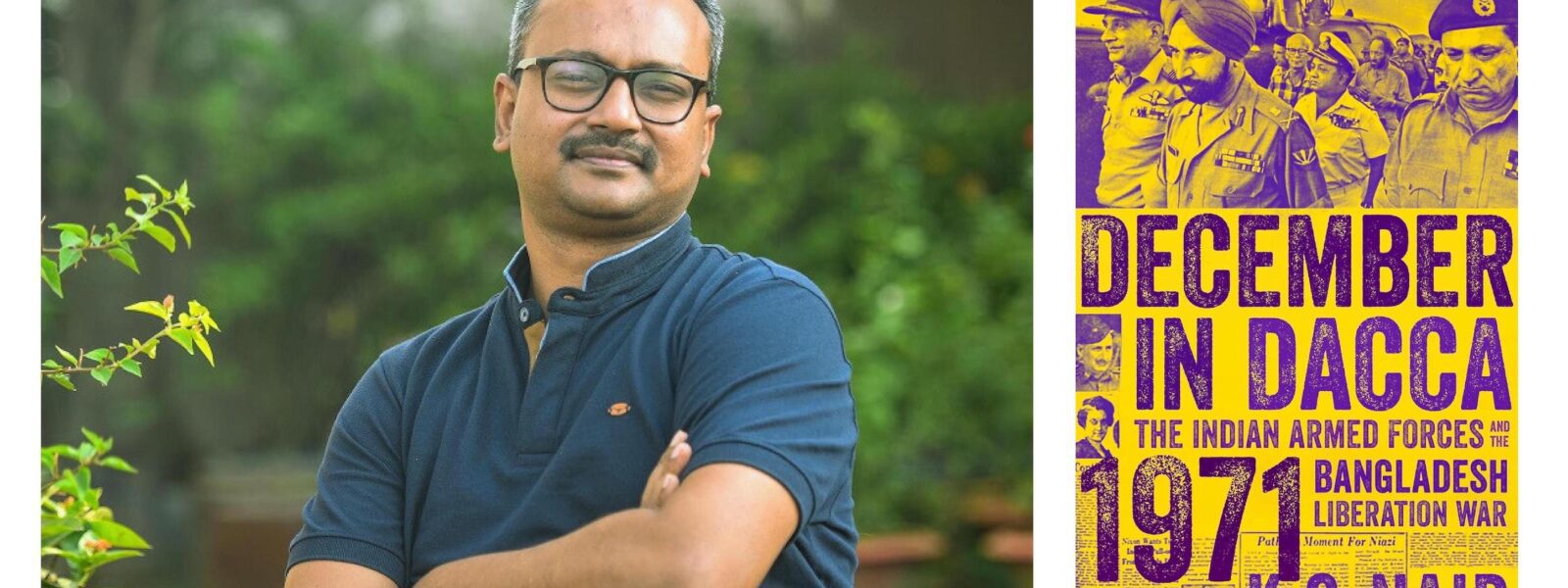
Fakhrul Arefeen Khan is an acclaimed Bangladeshi filmmaker, writer and director. He began his journey in the film industry in 1997 as a film activist and later ventured into independent filmmaking.
In 2007, Arefeen made his mark as a filmmaker with his national award-winning documentary, Al-Badar, about the Pakistani militia formed during the Bangladesh War of Independence. Arefeen later ventured into feature filmmaking, most noticeably with JK 1971 (2023). JK 1971 is based on the true story of the hijacking of a Pakistani International Airlines flight by a French national in response to the plight of the Bengali refugees forced to flee to Kolkata. The film was honoured with the Best Historical Film award at the Mumbai International Film Festival in 2022.
Through his compelling narratives, Fakhrul Arefeen Khan has become a prominent figure in the Bangladeshi film industry, garnering recognition and acclaim both nationally and internationally.
K.S. Nair, aka “Sree”, is a military historian who writes on the Indian armed forces, and is the author of December in Dacca. This is a forensic and personal exploration of the Indian Army’s involvement in the Bangladesh War of Liberation in 1971.
In his book, Sree argues that the 1971 war between India and Pakistan, to help liberate the people of Bangladesh, is one of the last “just wars” of the twentieth century. “Good triumphed decisively, unequivocally and indisputably”. Sree goes on to write that the eventual victory in Dhaka in December 1971 was “a validation of the enormously optimistic belief of our founding fathers that our poor, crowded third world could be made right by our own efforts, with no white saviours in sight.”
December in Dacca seeks to right this wrong. The book retells the many thrilling anecdotes, setting them within their diplomatic, strategic and tactical contexts.
Tracing Bill Slim’s reconquest of Burma, we explore how WW2 led to where Myanmar is today.
Rob Lyman explores the events and ramifications of WW2 in Kolkata, Kohima and the Naga Hills.
An endurance trek through the Naga Hills, in the footsteps of the Naga soldiers of the Assam.